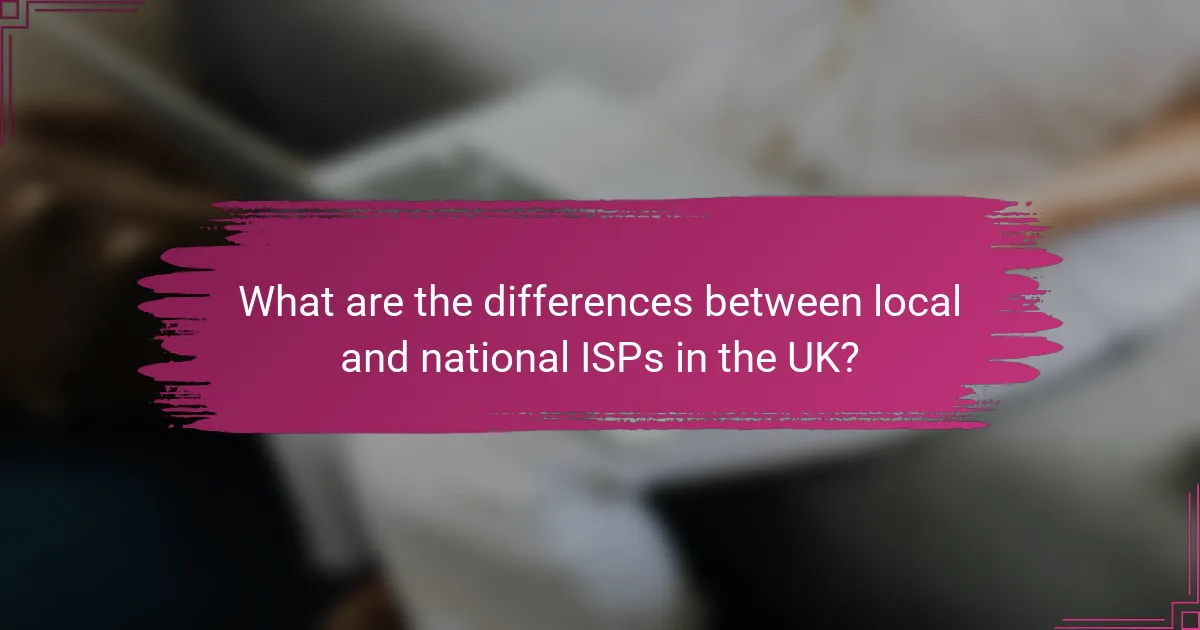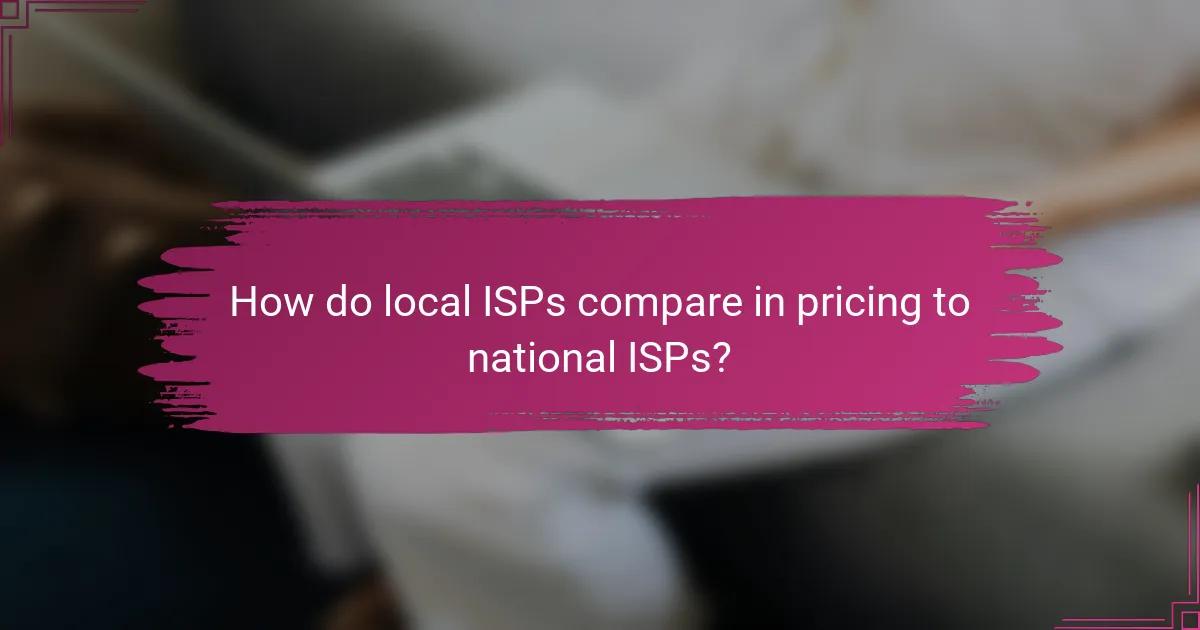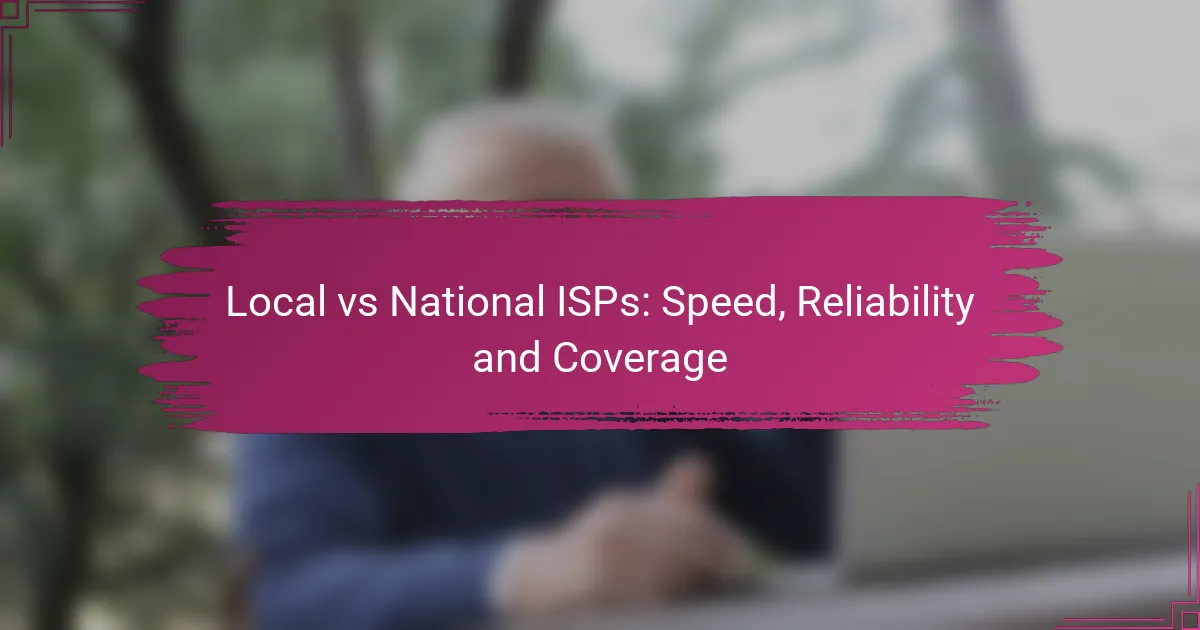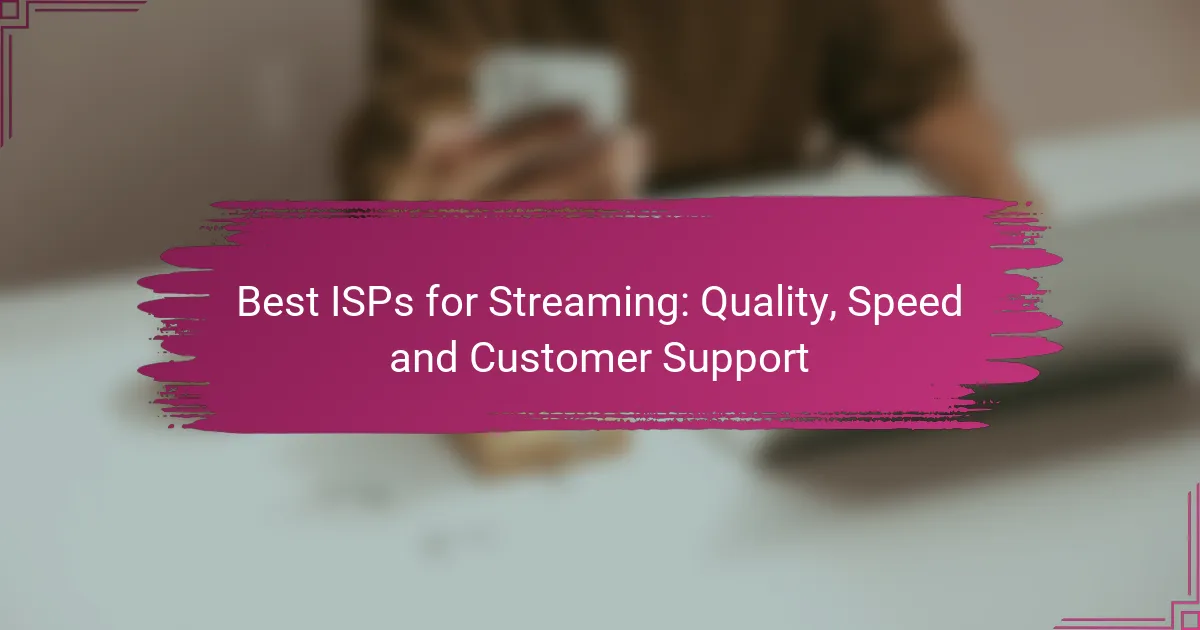When choosing between local and national ISPs, it’s essential to consider factors like speed, reliability, and coverage. Local ISPs often tailor their services to meet community needs, while national providers offer broader reach with standardized options. Understanding these distinctions can guide consumers in selecting the best internet service for their specific requirements.

What are the differences between local and national ISPs in the UK?
Local ISPs typically focus on specific regions, offering customized services that cater to community needs, while national ISPs provide extensive coverage across the entire country, often with standardized packages. Understanding these differences can help consumers choose the right provider based on speed, reliability, and service quality.
Local ISPs offer tailored services
Local ISPs often provide specialized services that meet the unique demands of their communities. They may offer flexible plans, faster installation times, and personalized customer support, which can be advantageous for small businesses and residential users alike.
For example, a local ISP might provide packages that include community-focused features, such as support for local events or partnerships with local businesses. This can create a more engaged customer experience compared to larger providers.
National ISPs provide widespread coverage
National ISPs are designed to serve a broad audience, ensuring that their services are available in urban, suburban, and rural areas across the UK. This extensive coverage can be beneficial for users who move frequently or require consistent service in various locations.
However, while national ISPs offer reliable connectivity in many areas, the quality of service can vary significantly depending on the specific location. Users in remote regions may experience slower speeds or less reliable connections compared to those in urban centers.
Cost differences between local and national ISPs
Pricing structures can differ greatly between local and national ISPs. Local providers may offer competitive rates to attract customers, often presenting lower-cost options for basic services. In contrast, national ISPs might have a wider range of pricing tiers, but their entry-level packages can sometimes be more expensive.
When evaluating costs, consider not only the monthly fees but also installation charges, equipment rental, and any promotional discounts. Local ISPs may offer more flexible contracts, while national providers often have longer commitment periods.
Customer service experiences vary
Customer service is a critical aspect where local and national ISPs can differ significantly. Local ISPs often pride themselves on providing personalized support, with shorter wait times and more knowledgeable representatives familiar with local issues.
In contrast, national ISPs may have larger customer service teams, but users often report longer response times and less personalized assistance. When choosing an ISP, consider the importance of customer service in your decision-making process, as it can greatly affect your overall satisfaction.

Which ISP offers the best speed in London?
In London, Hyperoptic generally offers the best internet speeds, particularly for users seeking high-performance fiber connections. Their services can reach up to 1 Gbps, making them a top choice for bandwidth-intensive activities.
Local ISP: Hyperoptic delivers high speeds
Hyperoptic is known for its ultra-fast fiber broadband, providing speeds that can reach 1 Gbps in many areas of London. This makes it an excellent option for households with multiple users or for those who engage in activities like gaming, streaming, or large file downloads.
One key advantage of Hyperoptic is its focus on urban areas, allowing for quicker installation times and fewer service interruptions. However, availability may be limited to specific neighborhoods, so checking coverage in your area is essential.
National ISP: BT provides extensive fiber options
BT is a national provider that offers a wide range of fiber broadband packages across London, with speeds typically ranging from 50 Mbps to 900 Mbps. Their extensive network ensures that many residents have access to reliable internet service.
While BT’s speeds may not match Hyperoptic’s top offerings, they provide a solid alternative with various pricing plans and bundles, making it easier for users to find a suitable option. Additionally, BT’s larger infrastructure can offer more consistent service in areas where local ISPs may struggle.

How reliable are local ISPs compared to national ISPs?
Local ISPs often provide comparable reliability to national ISPs, but their performance can vary significantly based on location and infrastructure. While local providers may excel in customer service and lower downtime, national ISPs typically benefit from more extensive resources and infrastructure.
Local ISPs often have lower downtime
Local ISPs frequently experience lower downtime due to their smaller service areas and more focused customer base. This proximity allows them to respond quickly to outages and maintenance needs, often resulting in faster resolution times. For example, many local ISPs report average downtimes of less than a few hours per month.
Additionally, local providers may prioritize community engagement, leading to a more invested approach in maintaining reliable service. Customers often appreciate the personalized support and quicker response times compared to larger companies.
National ISPs may have more robust infrastructure
National ISPs typically have access to more extensive and advanced infrastructure, which can enhance their overall reliability. They often invest heavily in technology and redundancy systems, which can help mitigate outages and ensure consistent service. For instance, national providers may have multiple data centers and backup systems to maintain connectivity during disruptions.
However, this infrastructure can sometimes lead to slower response times for individual customers, especially in rural areas where service may be less prioritized. While national ISPs can offer high-speed connections, local ISPs may provide more tailored support and quicker resolutions for localized issues.

What is the coverage area of major ISPs in the UK?
The coverage area of major ISPs in the UK varies significantly between local and national providers. Local ISPs typically serve specific neighborhoods, while national ISPs often have extensive reach across both urban and rural regions.
Local ISPs cover specific neighborhoods
Local ISPs focus on providing services within defined geographic areas, often targeting specific neighborhoods or towns. This localized approach allows them to offer tailored services that meet the unique needs of their communities.
For example, a local ISP may provide high-speed fiber connections in a small town where larger providers have limited infrastructure. Customers in these areas may benefit from competitive pricing and personalized customer support.
National ISPs cover most urban and rural areas
National ISPs have a broader coverage area, typically reaching a majority of urban and many rural locations across the UK. They invest heavily in infrastructure to ensure widespread availability of services, including broadband and mobile networks.
These providers often offer various plans to cater to different user needs, from basic internet access to high-speed fiber options. However, while they may cover more ground, customer service can sometimes be less personalized compared to local ISPs.

What factors should you consider when choosing an ISP?
When selecting an Internet Service Provider (ISP), consider speed, reliability, customer service, pricing, and contract terms. These factors significantly impact your online experience and can vary between local and national providers.
Evaluate speed and reliability
Speed and reliability are crucial when choosing an ISP. Look for providers that offer speeds matching your usage needs, whether for streaming, gaming, or remote work. Generally, speeds of 25 Mbps or higher are recommended for most households.
Reliability is often assessed through uptime percentages. A good ISP should provide at least 99% uptime, ensuring consistent access to the internet. Check user reviews and local reports to gauge the reliability of different ISPs in your area.
Consider customer service ratings
Customer service can greatly affect your satisfaction with an ISP. Research ratings from independent review sites to find providers known for responsive and helpful support. Look for ISPs that offer multiple contact methods, such as phone, chat, and email.
Pay attention to common complaints regarding customer service, such as long wait times or unresolved issues. A provider with a solid reputation for customer support can save you time and frustration in the long run.
Assess pricing and contract terms
Pricing structures can vary widely between ISPs, so compare plans to find one that fits your budget. Be aware of promotional rates that may increase after an initial period. Aim for transparency in pricing to avoid unexpected charges.
Review contract terms carefully, including the length of the agreement and any early termination fees. Some ISPs offer month-to-month plans, while others may require a commitment of one year or more. Understanding these terms can help you avoid pitfalls and select the best option for your needs.

How do local ISPs compare in pricing to national ISPs?
Local ISPs often offer competitive pricing compared to national ISPs, with many providing lower rates and more flexible plans. However, the pricing can vary significantly based on the specific services, coverage area, and customer needs.
Pricing Structures
Local ISPs typically have simpler pricing structures, often featuring straightforward monthly fees without hidden charges. In contrast, national ISPs may have more complex pricing that includes promotional rates, equipment fees, and additional service charges.
For example, a local ISP might charge around $50 per month for a basic plan, while a national provider could advertise a similar plan at $40 but include extra costs that raise the total to $60 or more. Always read the fine print to understand the total cost.
Promotions and Discounts
Local ISPs frequently offer promotions and discounts to attract new customers, such as reduced rates for the first few months or bundled services. National ISPs also provide promotions, but these may be less frequent or tied to long-term contracts.
For instance, a local ISP might offer a $20 discount for the first six months, making their service more appealing upfront. In contrast, national ISPs might require a commitment of one or two years to access similar discounts.
Value for Money
When assessing value for money, consider not just the price but also the quality of service. Local ISPs often focus on customer service and community engagement, which can lead to better support and satisfaction.
In many cases, local providers may offer higher speeds or more reliable connections for the same price as national ISPs. Evaluating customer reviews and service reliability can help determine which option provides the best overall value.



